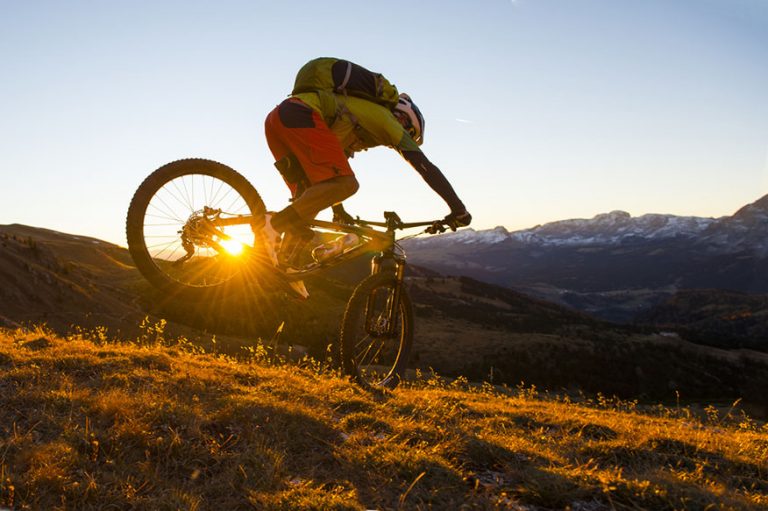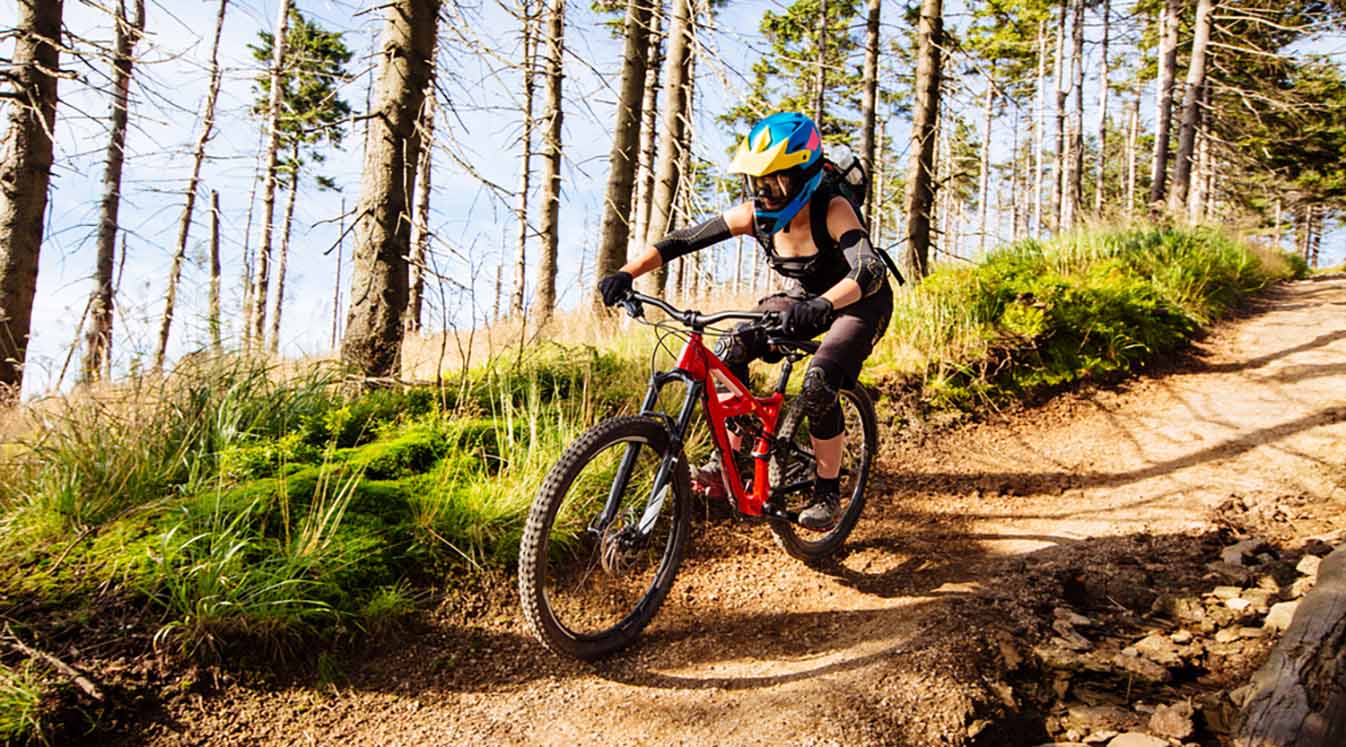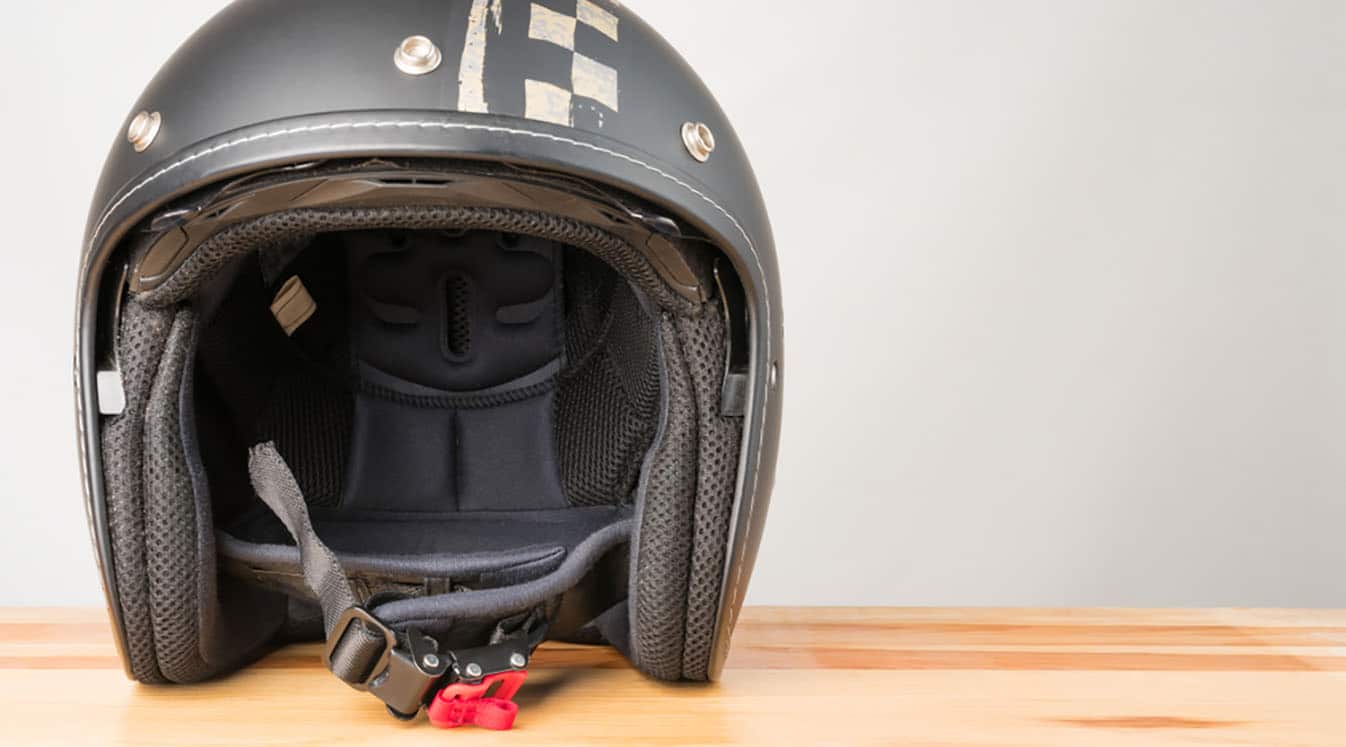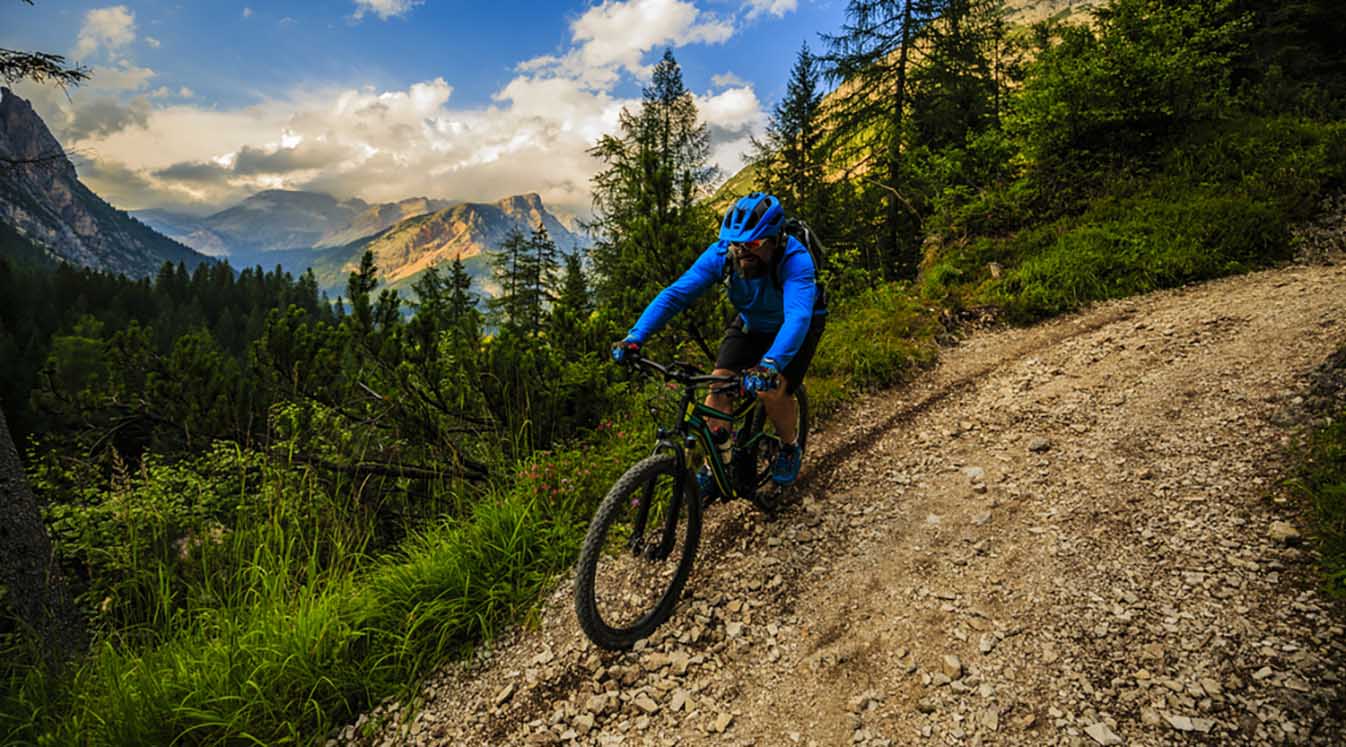Few things in life are as thrilling as cruising down the side of a mountain on a bike, but you can’t just hop on a set of wheels and hope for the best. In addition to having a reliable mountain bike, you need to wear the proper gear to protect yourself from serious injury. Going downhill will naturally increase your speed, which can increase your chances of getting into an accident. The slope will also cause you to fall down the mountain if you lose control of your bike. But wearing the right safety equipment will greatly reduce your chances of injury by absorbing the impact during a fall and helping you stay in control of the bike.
New to downhill biking? Use these downhill biking tips to prepare for your first descent. Now, let’s discuss what to wear downhill mountain biking so you can be equipped and ready for whatever the trail brings.
Read Our Essential Downhill Mountain Biking Tips Here
Full-Face Helmet
Leave your road bike helmet at home because you will need a full-face helmet that wraps all the way around your head when pedaling downhill. Road bike helmets are designed to protect the top of your head by distributing the blow upon impact. Mountain bike helmets cover more of your head with lower rear protection and a visor to shield your eyes, nose, mouth and chin. This will protect you from all kinds of hazards in the event of an accident, including sharp rocks, gravel, dirt and trees.
The helmet won’t protect you unless it fits. In addition to using the chin strap to secure the helmet, choose the right size based on the circumference of your head. It should fit snugly against your scalp and face without moving out of place.

Source: BLACKDAY/Shutterstock.com
Bluetooth Headset
All that extra speed can be exhilarating, but it can also be intimidating, causing you to lose control. It always helps to talk to another person in real time when you’re not sure what to do. Your coach or companion can give you tips on dealing with uneven terrain and steering clear of obstacles. Use a bike helmet with Bluetooth to keep in touch on the way down. The device will automatically connect when you are in range so you can stay squarely focused on the road. It comes with voice activation to help you access all the features of your phone or GPS without taking your hands off the handlebars and JBL speakers that produce clear audio for better real-time communication. Connect with up to 15 riders at a time to stay in sync with large groups.
Stay Connected with a Bluetooth Bike Helmet
Gloves
If you’re bracing for a fall, most people instinctively use their hands to block their face, so you need to wear durable gloves that will protect your skin from cuts and abrasions. Use a pair with hard, impact-absorbing inserts that will shield your knuckles from sudden blows. Wearing gloves will also help prevent blisters on your palms and fingers. You’ll need to keep the brakes engaged to reduce your speed when going downhill, which can put pressure on your hand muscles. The gloves should come with ventilation to reduce perspiration so you can keep a steady grip.
Shoes
You’ll need to wear a special pair of shoes to handle the wilderness. They usually have grippy soles for added traction on rugged terrain and hugging the pedals. The last thing you want to do is let your feet slide out from the pedals. The shoes will either come with cleats that clip into the pedals or a sticky rubber sole if the pedals are flat.
Pads
When it comes to mountain biking gear, you can never have too much body protection.
Let’s start with the back, which tends to be an issue for lots of people. The spine controls nearly all the movement in your body, so be sure to treat it with care. Wear a body vest or armor plate around your chest to reduce the risk of injury. While back impacts are rare, there’s a chance you could land on your back on the way down.
Your knees will also take a hit during a fall. They are practically guaranteed to make contact with the ground, so wear a set of knee pads under your riding pants.
If you’re looking for some extra peace of mind, consider wearing a neck brace and shoulder pad. While these types of injuries are rare, it’s always better to be safe than sorry.

Source: dolomite-summits/Shutterstock.com
Use this gear list to master the art of downhill mountain biking without putting yourself at risk. If you fall while wearing the right safety gear, you can always get up and keep riding.





